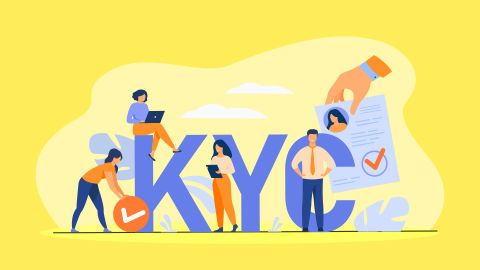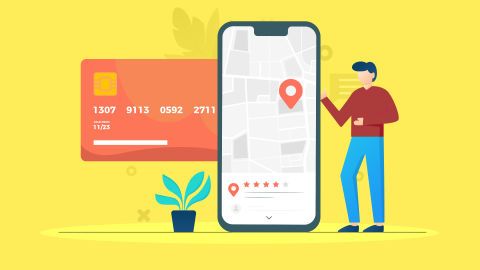Introduction to Android and iOS
Android and iOS dominate the mobile world today. Both systems power the smartphones we rely on daily, but they work in very different ways. Android, made by Google, runs on phones from brands like Samsung, Xiaomi, and OnePlus. iOS, created by Apple, works only on iPhones. While Android gives users more freedom to change how their phone looks and works, iOS focuses on making everything simple and secure.
What is Android?
Android is a mobile operating system created by Google. It powers most non-Apple smartphones in the world today. Android is based on open-source code, which means phone makers can change it to fit their needs. This is why Samsung phones look different from Xiaomi phones, even though both use Android.
Android lets users change many things about their phones. You can add widgets to your home screen, download different app launchers, and even install apps from outside the Google Play Store. This makes Android popular with people who like to make their phone truly their own.
What is iOS?
iOS is Apple's mobile operating system that runs exclusively on iPhones and iPads. Apple designed iOS with simplicity in mind, making it easy for most people to use without reading instructions. The system has strict security rules, which helps protect users from harmful apps and viruses.
iOS works perfectly with other Apple products like MacBooks, Apple Watches, and AirPods. Everything syncs together so you can start something on your phone and finish it on your computer. The App Store offers thousands of high-quality apps that must pass strict tests before being available to download.
Key differences between Android and iOS
| Feature | Android | iOS |
| User interface | Highly customisable with widgets and launchers | Clean, uniform design with limited customisation |
| Device variety | Available on phones from many companies | Only available on Apple iPhones |
| App stores | Google Play Store plus alternative sources | Apple App Store only |
| Price range | Options from budget to premium | Mostly premium-priced devices |
| Updates | Varies by manufacturer and model | Consistent updates for 5+ years |
| File management | Open file system with folder access | Restricted file management system |
| Default apps | Can change default apps for most functions | Limited ability to change default apps |
| Customization | Deep personalisation possible | Limited to wallpapers and widgets |
User interface and customisation
- Android offers extensive customisation options including widgets, themes, and custom launchers that completely change how your phone looks and works. You can make your Android phone truly unique to match your style and needs.
- iOS has a more uniform look across all devices. Recent updates allow some widget placement on home screens, but options remain limited compared to Android. This makes iOS easier to learn but less flexible.
- Android users can access apps through the Google Play Store, which has millions of apps with varying quality. Users can also install apps from other sources if they choose, giving more freedom but potentially increasing security risks.
- iOS restricts downloads to the Apple App Store only. All apps undergo strict quality checks, resulting in fewer apps overall but generally higher quality and security. Many premium apps appear on iOS first.
- Android performance varies widely depending on the device manufacturer and specifications. Budget phones may slow down faster than premium models.
- iOS devices typically maintain smooth performance even on older models because Apple optimises the software specifically for their limited hardware range. This means iPhones often feel fast even with less RAM than Android phones.
- Android runs on devices from many manufacturers, offering choices at every price point from basic budget phones to premium flagships.
- iOS works only on Apple devices, limiting hardware choices but ensuring consistent quality and performance across all products.
- Android offers basic connectivity with other devices but lacks a truly unified ecosystem. Different manufacturers have their own connection solutions that don't always work together smoothly.
- iOS devices work together seamlessly. You can answer iPhone calls on your MacBook, copy text on your iPhone and paste it on your iPad, or automatically unlock your Mac with your Apple Watch.
- Android update schedules depend on the manufacturer. Premium phones might get updates for 2-3 years, while budget models often receive fewer updates.
- Apple provides iOS updates to devices for 5+ years on average. Even older iPhone models receive security patches, making them useful for longer periods.
- Google Assistant on Android understands natural language better and connects to more third-party services and smart home devices. It excels at answering complex questions and providing relevant information.
- Siri on iOS works well with Apple services but has more limited third-party integration. While improving, Siri still trails Google Assistant in understanding complicated requests.
- Android offers more gaming options including emulators for old console games and sideloaded apps not available on official stores. Performance varies greatly depending on the phone model.
- iOS provides consistent gaming performance across devices of the same generation. Many premium mobile games launch on iOS first due to easier development for standardised hardware.
- Android devices come in all price ranges, from basic Rs. 5,000 phones to premium Rs. 1,50,000 models. This variety makes Android accessible to more people regardless of budget.
- iOS devices maintain premium pricing, with even older models commanding relatively high prices. The initial investment is higher, but iPhones typically retain value better over time.
| Aspect | Android | iOS |
| Pros | Extensive customisation options | Consistent, user-friendly interface |
| Wide range of device price points | Strong privacy and security features | |
| Expandable storage on many models | Long-term software support | |
| USB-C charging standard | Seamless ecosystem integration | |
| More app flexibility | Higher resale value | |
| Cons | Inconsistent update schedule | Higher initial cost |
| Variable performance across brands | Limited customisation | |
| More vulnerable to malware | No expandable storage | |
| Bloatware on some devices | Closed ecosystem | |
| Shorter software support lifespan | Lightning port (older models) |
Which one should you choose?
The right choice between Android and iOS depends on what matters most to you. If you value customisation, device variety, and lower cost options, Android might be your best bet. If you prefer simplicity, security, and ecosystem integration with other Apple products, iOS would serve you better.
Consider your budget, what apps you need, and how you plan to use your phone. No matter which you choose, both systems offer excellent features that will meet most people's needs. And with the Bajaj Finserv Insta EMI Card in your wallet, you can purchase your choice without straining your monthly budget. You may already be eligible – enter your mobile number and verify with an OTP to check your pre-approved offer instantly!
Android and iOS mobiles online with Insta EMI Card
Want the latest smartphone without paying the full price upfront? The Bajaj Finserv Insta EMI Card makes purchasing both Android and iOS devices more affordable by converting the cost into easy monthly instalments with zero down payment options on select products:
- Visit any major e-commerce platform like Amazon, Flipkart, or the brand's official website.
- Select your preferred Android or iOS device and add it to your cart.
- During checkout, select the EMI payment option.
- Enter your Bajaj Finserv Insta EMI Card details when prompted.
- Choose your preferred EMI tenure between 1-60 months.
- Complete the purchase and receive your new smartphone.
- Visit any Bajaj Finserv partner store near you.
- Choose your desired Android or iOS device.
- Inform the store representative that you wish to pay using your Insta EMI Card.
- Share your card details with the representative.
- Select your preferred repayment tenure.
Eligibility criteria and documents required for Bajaj Finserv Insta EMI Card
To apply for the Insta EMI Card, you must:
- Be an Indian citizen aged between 21-65 years
- Have a regular source of income
- Maintain a good credit score per Bajaj Finserv risk policies
- Valid PAN card
- Aadhaar card for identity verification
- Address proof
- Bank account details with IFSC code for e-mandate registration
Making the right choice between Android and iOS
The difference between Android and iOS comes down to what you value in a smartphone. Android offers freedom of choice and customisation across many price points, while iOS delivers a premium, seamless experience with long-term support.
Whichever system you choose, the Bajaj Finserv Insta EMI Card makes upgrading to your dream phone more affordable through easy monthly payments. With pre-qualified card loan offer amounts of up to Rs. 3 lakh and repayment tenures ranging from 1-60 months, you can select the payment plan that fits your budget.
Check your pre-approved offer today. You might already be eligible for an Insta EMI Card - simply enter your mobile number and complete the OTP verification to find out!
Ready to experience the best of modern smartphone technology without financial strain? Apply for your Bajaj Finserv Insta EMI Card today and step into the world of convenient, budget-friendly shopping.
Biggest upcoming sale in India in 2025
Top platforms to buy products with Bajaj Insta EMI Card
Check more




